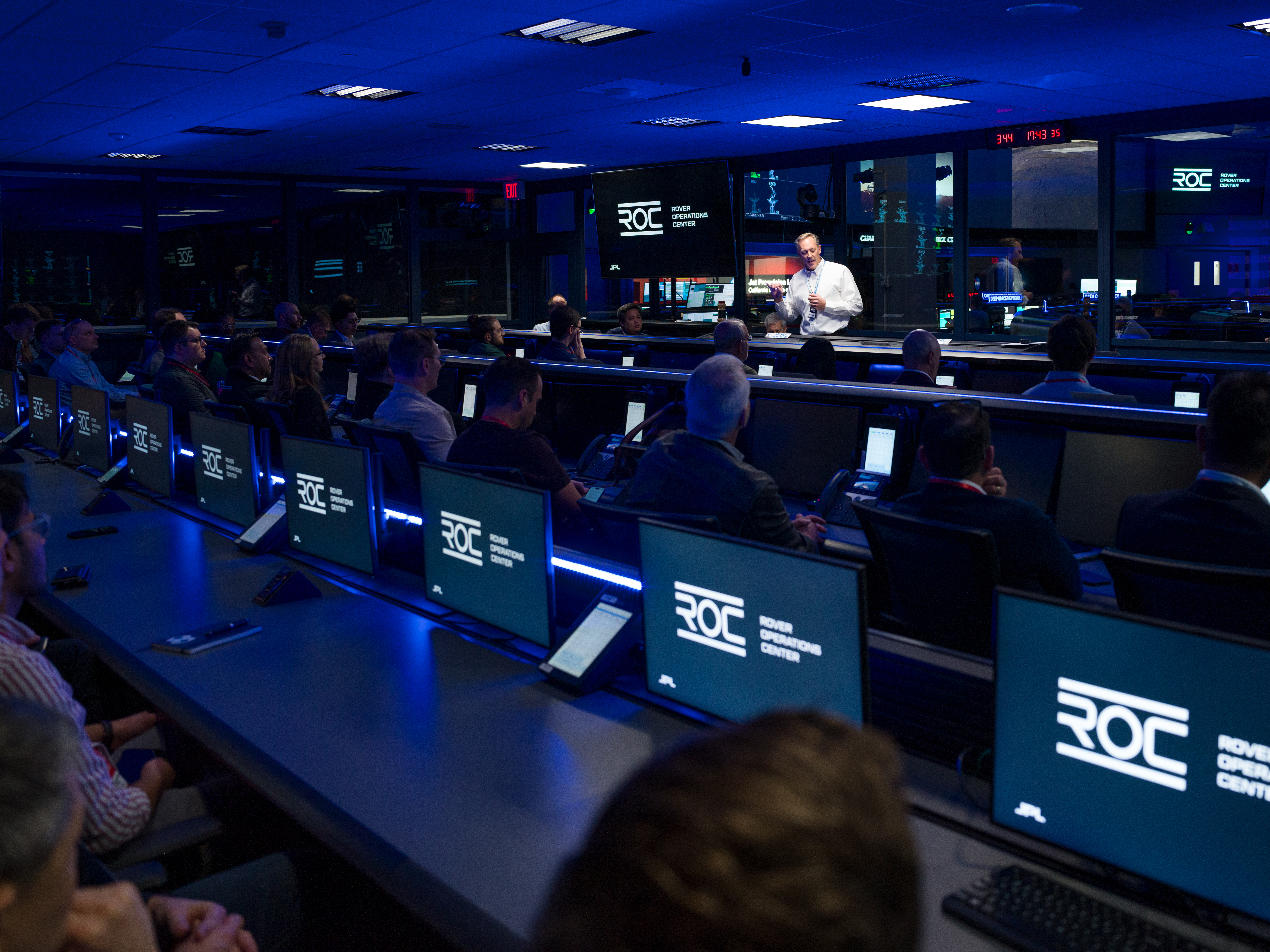Scientists continue to process data from the Cassini Mission for publication in the peer-reviewed scientific literature, and for presentation at technical and non-technical meetings. Meanwhile, work proceeds on Project Closeout, which includes ensuring proper archiving of the data, creating a Final Mission Report, and dismantling and recycling the Mission's ground system components.
Monday, Jan. 1
Many of Cassini's team members were able to enjoy some significant time off during the holidays, given that there are no longer any in-flight operations, which used to demand constant attention.
Wednesday Jan. 3
The International Committee on Technical Interchange for Space Mission Operations and Ground Data Systems selected the Cassini Flight Operations Team to receive the "International Space Operations Award for Outstanding Achievement for 2018."
Monday Jan. 8
Cassini's Attitude Control engineers presented seven papers, and chaired two sessions, at the AIAA (American Institute of Aeronautics and Astronautics) "2018 SciTech Guidance Navigation and Control" five-day conference in Kissimmee, Florida.
Wednesday Jan. 10
Dr. Jim Green is Director of the Planetary Science Division at NASA Headquarters. In his "Gravity Assist" podcast released today, he interviewed the Cassini Project Scientist Dr. Linda Spilker. The 20 minutes of audio, and a transcript, are available here: https://www.nasa.gov/mediacast/gravity-assist-saturn-with-linda-spilker
Monday Jan. 15
An image showing haze layers in the upper reaches of atmosphere on Saturn's planet-like moon Titan was featured today: https://photojournal.jpl.nasa.gov/catalog/PIA21902
Wednesday Jan. 17
Today's news feature on the Cassini website describes how liquid bodies on Titan's surface appear to be connected below the surface, in something akin to an aquifer system at Earth: https://www.nasa.gov/feature/jpl/cassini-finds-saturn-moon-has-sea-level-like-earth
Thursday Jan. 25
The team learned today that Cassini was selected to receive the "Engineering Project of the Year" award from the Orange County Engineering Council of California.
Friday Jan. 26
The World Economic Forum in Davos, Switzerland, welcomed a special visitor among its attending leaders of nations and economic powerhouses: the Cassini Project Scientist gave three invited talks there, whose well-received topics included Cassini and other outer-planet missions.
Tuesday Jan. 30
Visitors to JPL's Mission Control room over the past years have been able to see the Cassini Mission Ace console, from which realtime operations were carried out. Today, pieces of computer hardware from that console were released for allocation to other users around JPL, and will soon be gone from public view. Of note, one of the computer screen displays has been showing some of the final on-board conditions telemetered from the spacecraft up to the moment when contact was lost, before burning in to Saturn's atmosphere last September.
Saturn is once again visible from Earth, having come out from its yearly passage close to the Sun in our sky. Early risers may find the ring-world rising in the east around 4:35 am.
Wednesday Jan. 31
JPL made headlines 60 years ago today, with the successful launch of America's first Earth-orbiting spacecraft aboard a Jupiter-C rocket: https://apod.nasa.gov/apod/ap180131.html.
Wrapup
The Cassini spacecraft ended its mission operations on Sept. 15, 2017. Cassini Significant Events reports are now being published near the beginning of each month. This page offers all the details of the Mission's ending: https://solarsystem.nasa.gov/missions/cassini/mission/grand-finale/overview/
































